
Courtesy of Mary Ramirez.

Thomas Edison once said that “the three great essentials to achieve anything worthwhile are, first, hard work; second, stick-to-itiveness; third, common sense."
Opinions on Thomas Edison aside, he was right. Nothing was ever won or maintained easily, without struggle, and without the basic principles of common sense.
The same is true for our Second Amendment rights.
Simply put, the gun debate is riddled with myths, emotions, half-truths, and artfully presented facts — all of which make it almost impossible to distinguish truth from farce.
Readers, a common sense look at some of America’s most popular gun myths:
This one’s simple.
No matter where you live, it’s going to take minutes—not seconds—for the police to respond to a call for help.
In contrast, a 9mm bullet flying out of a Glock 34 travels at a whopping 1,400 feet per second.
The target can be you, or your assailant. You choose.
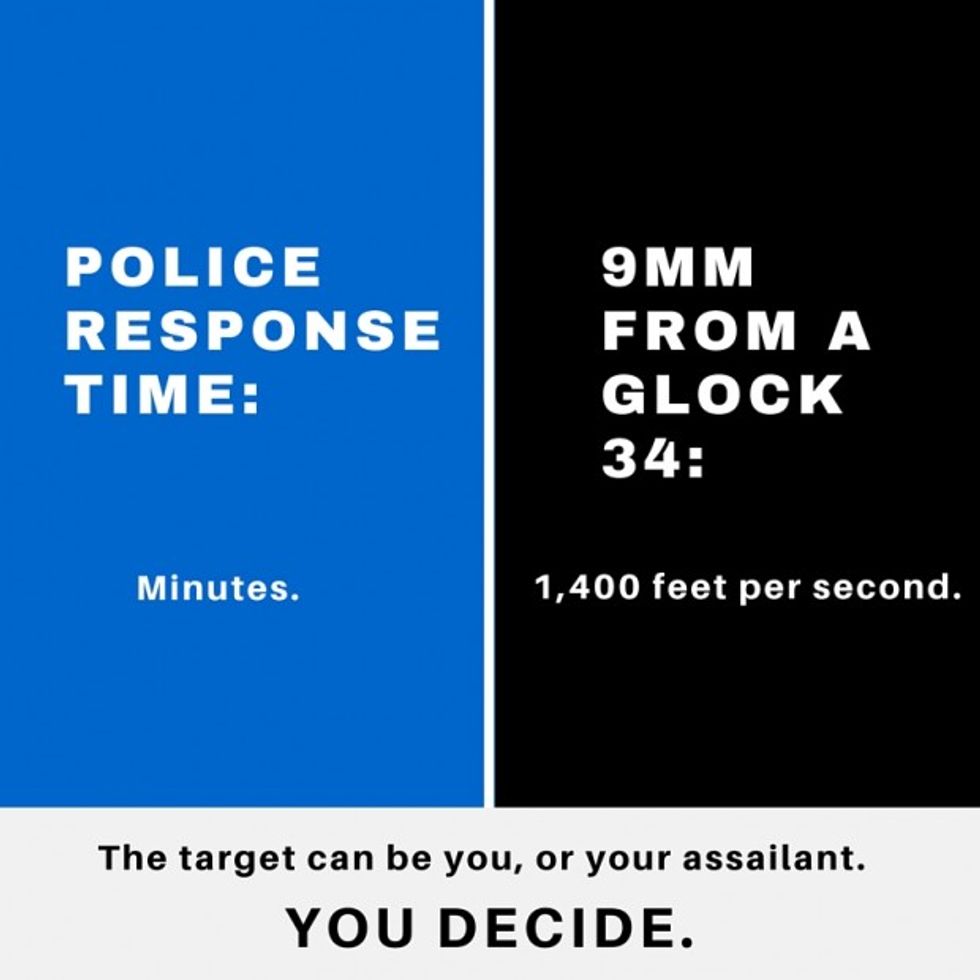
The number of concealed carry permit holders has more than doubled since 2007, from 4.5 million to 11.1 million—alongside a significant drop in crime: “the murder and violent crime rates are lower in the 25 states with the highest permit rates compared to the rest of the U.S.”
That’s just 0.03 percent of the entire U.S. population, and yet their studied impact on the reduction in crime is astounding.
Compare this figure to the number of purported “non-self-defense killings” by concealed carry ownersas compiled by the Violence Policy Center: “at least 516 people have been killed since May 2007 in non-self defense incidents involving private citizens legally allowed to carry concealed handguns.”
That represents an infinitesimal 0.00004649 percent of all concealed carry permit owners in the United States.
Are they really the problem?
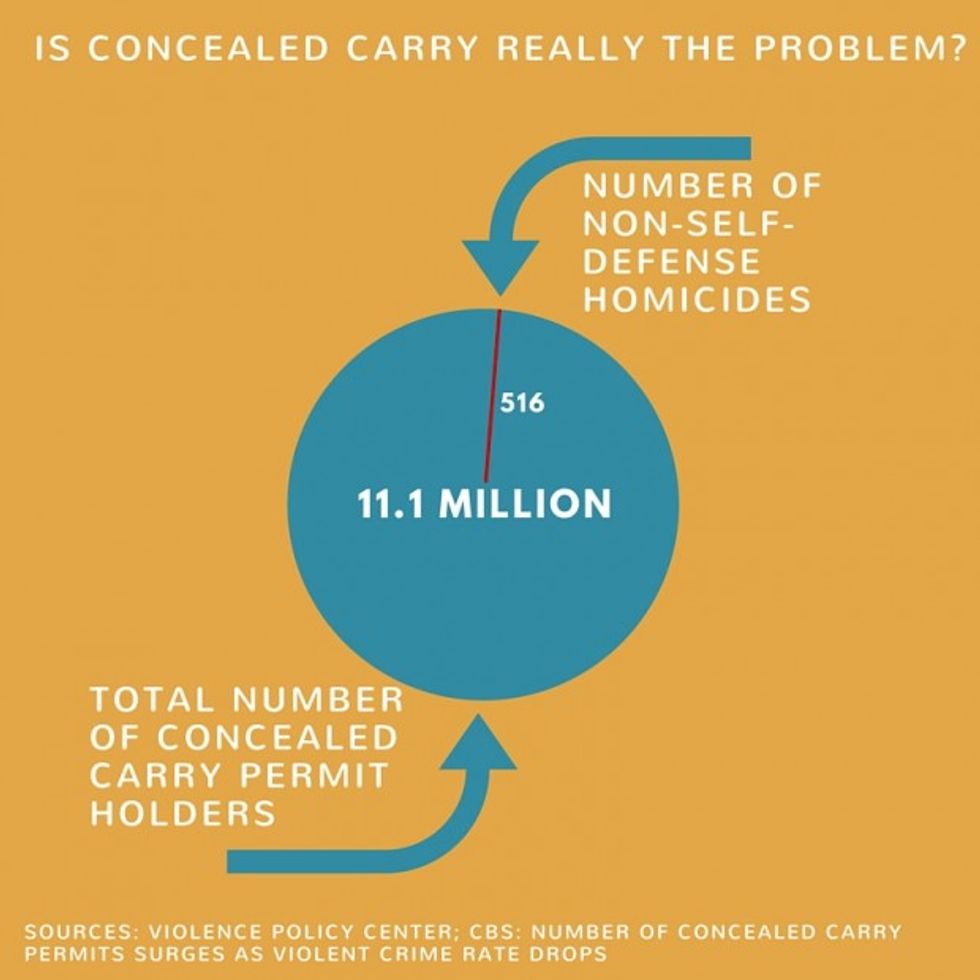
When you see studies that outline how the United States is responsible for 80 percent of all firearm deaths across a study of 23 developed, high-income countries, it’s hard to argue that we don’t have a major problem with gun violence.
Except, our country’s population sits at 319 million, while the largest population of any other country in this study was just 127 million (Japan)—and the rest sit significantly below that.
The point? All other arguments aside, of course a country whose population eclipses a significant portion of the rest of the participant countries is going to have more crime than the others in the study, of any kind. There are more people. It’s a matter of simple mathematics.
But what about the rest of the world? Why is it that we brush off the violence of nations like Honduras and Venezuela simply because they are developing nations, as if somehow this should negate or excuse violence? (I’m not belittling the social strife in those countries—but the deaths are still real nonetheless.) Why is it that so many quintessential gun control/gun violence country comparisons (like this one) refuse to observe the totality of violence worldwide?
If we assume gun ownership automatically equals higher murder rates, the United States should rank No. 1 across the board, all the time.
But it doesn’t.
Yes, we have the highest rate of civilian gun ownership in the world. Yet, we’re not even in the top 10 for murder. Honduras, at No. 1, suffers from 90.4 murders per 100,000; Colombia, at No. 10, suffers from 30.8 murders per 100,000.
The United States sits at just 5 murders per 100,000—remaining static during the last several years despite a significant rise in gun purchases.
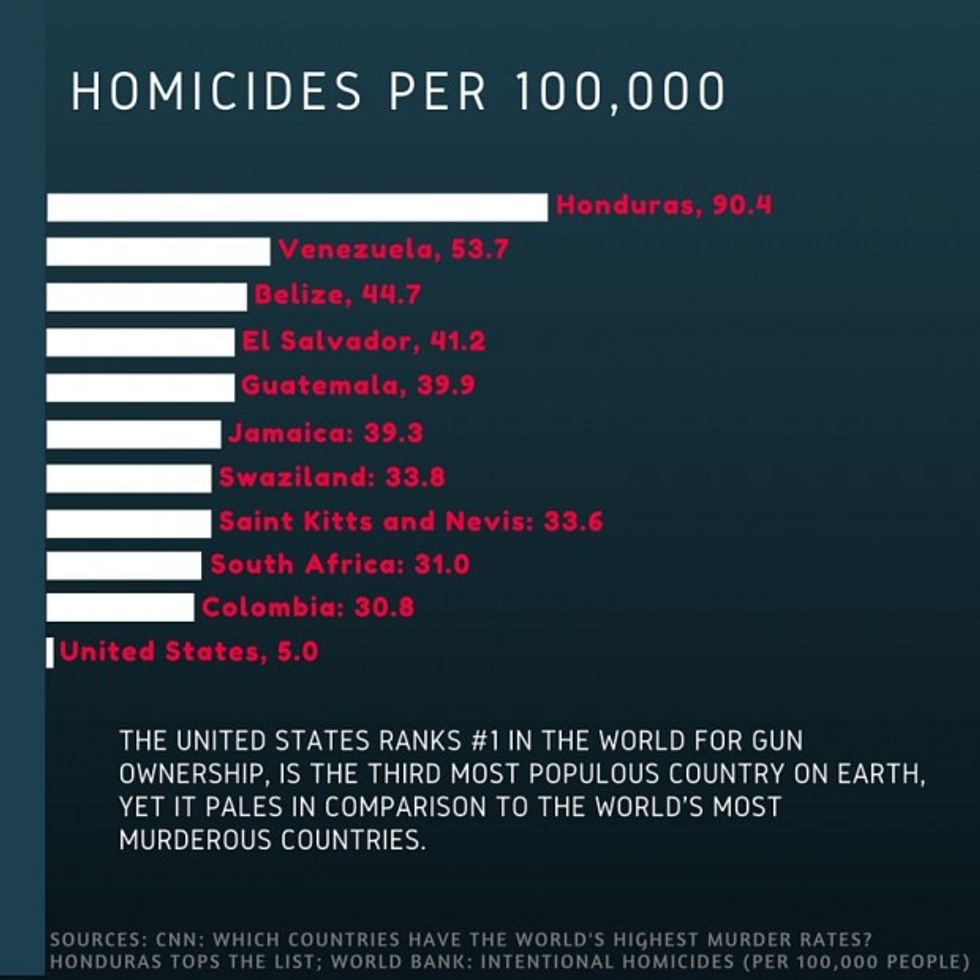
Yes—of the more than 41,000 suicides in 2013 in the U.S., over half of them were carried out by a firearm.
But stop and think about something for a moment. There are those who go into it with some hope of being stopped (think: people who sit on the edge of a bridge and contemplate jumping), and there are those who are absolutely set on taking their lives.
Those who use guns to commit suicide aren’t messing around—their intention is to die, and they’ll do so by whatever means they can. Making a gun more difficult (or impossible) to obtain won’t stop this.
Furthermore, if gun ownership makes suicide more pervasive, U.S. suicide rates should outpace most of the world.
Instead, Lithuania and South Korea top the list, at 28.6 and 26.3 per 100,000, respectively. By the above logic, Lithuania and South Korea should be off the charts in gun ownership—when the exact opposite is true. Lithuanian gun laws are “quite restrictive,” with just around 100,000 guns in a population of nearly 3 million people, and private gun ownership is entirely prohibited in South Korea.
Here’s some final perspective: the U.S. ranks No. 1 in the world for civilian gun ownership, but just 33rd in the world for suicides (of any kind).
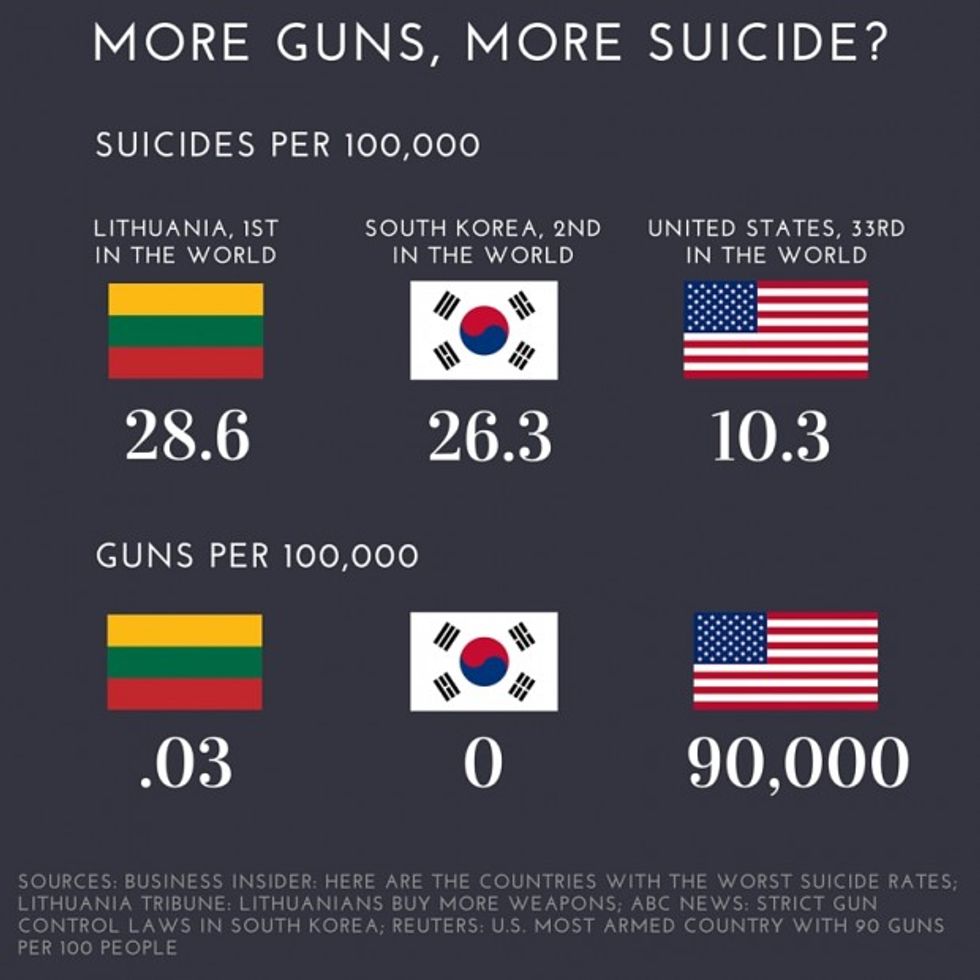
Consider Chicago—home to some of the toughest gun laws in the country, and one of the highest murder rates in the country.
Still, some argue that Chicago can’t be held up as the anti-gun control poster child, since it’s relatively “easy” to get guns outside city limits, and thus, that weakens the effect of Chicago’s laws.
Further, they argue that the city has a “high level of gang activity, and that gangs are both adept at procuring guns illegally and prone to involvement in shooting incidents.”
Explain then, the fact that crime in Chicago is going down in tandem with an increase in concealed carry permits:
“Since Illinois started granting concealed carry permits this year, the number of robberies that have led to arrests in Chicago has declined 20 percent from last year, according to police department statistics. Reports of burglary and motor vehicle theft are down 20 percent and 26 percent, respectively. In the first quarter, the city’s homicide rate was at a 56-year low.”
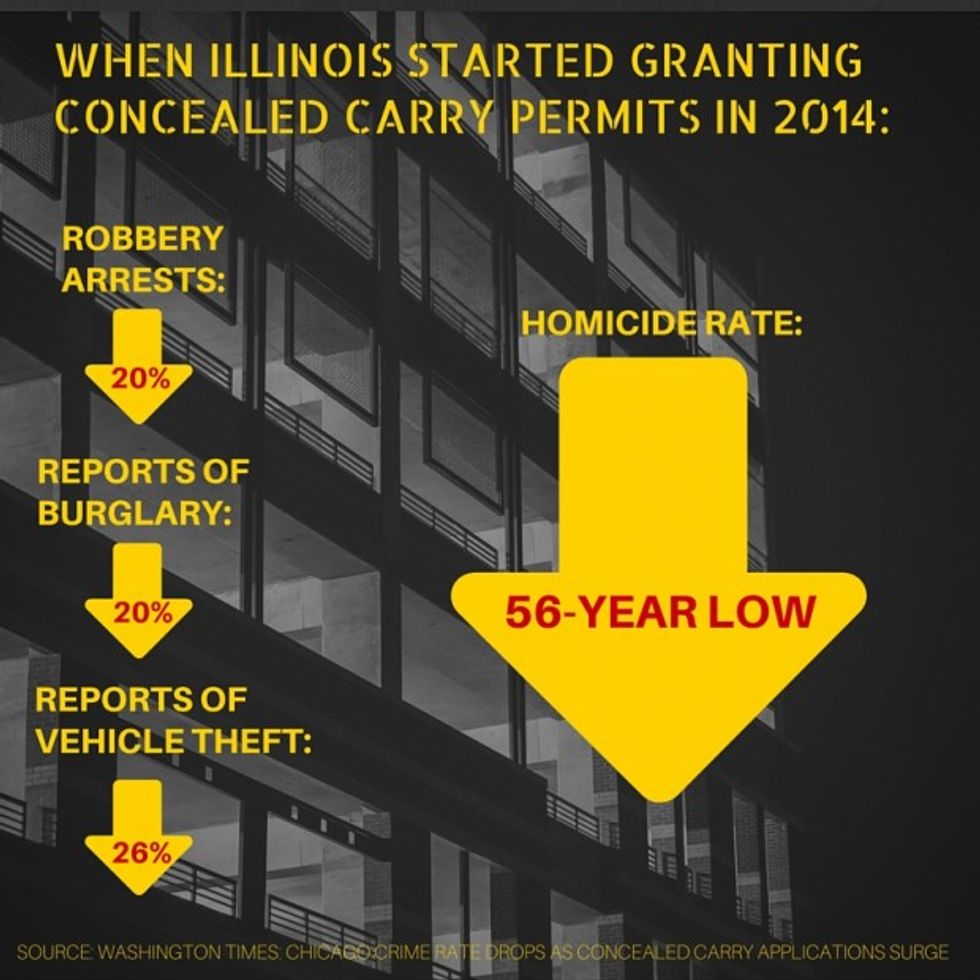
After deinstitutionalization in the 1960s put the severely mentally ill back into mainstream American public, today we have a mental illness rate in U.S. prisons that is “five times greater than in the regular population,” and “people with serious mental illness are three to four times more likely to be violent than others.”
It’s a common tale: from Adam Lanza (Sandy Hook) to Jared Loughner (Tucson shooting) and many in between, so many showed clear signs of severe mental illness before they exacted their crimes.
There’s also another stunning pattern: the pervasiveness of broken families.
Adam Lanza (Sandy Hook shooting), Dylann Roof (Charleston church shooting), Chris Harper Mercer (Umpqua Community College shooting) to name a few—they all have the exact same thing in common: a troubled family life.
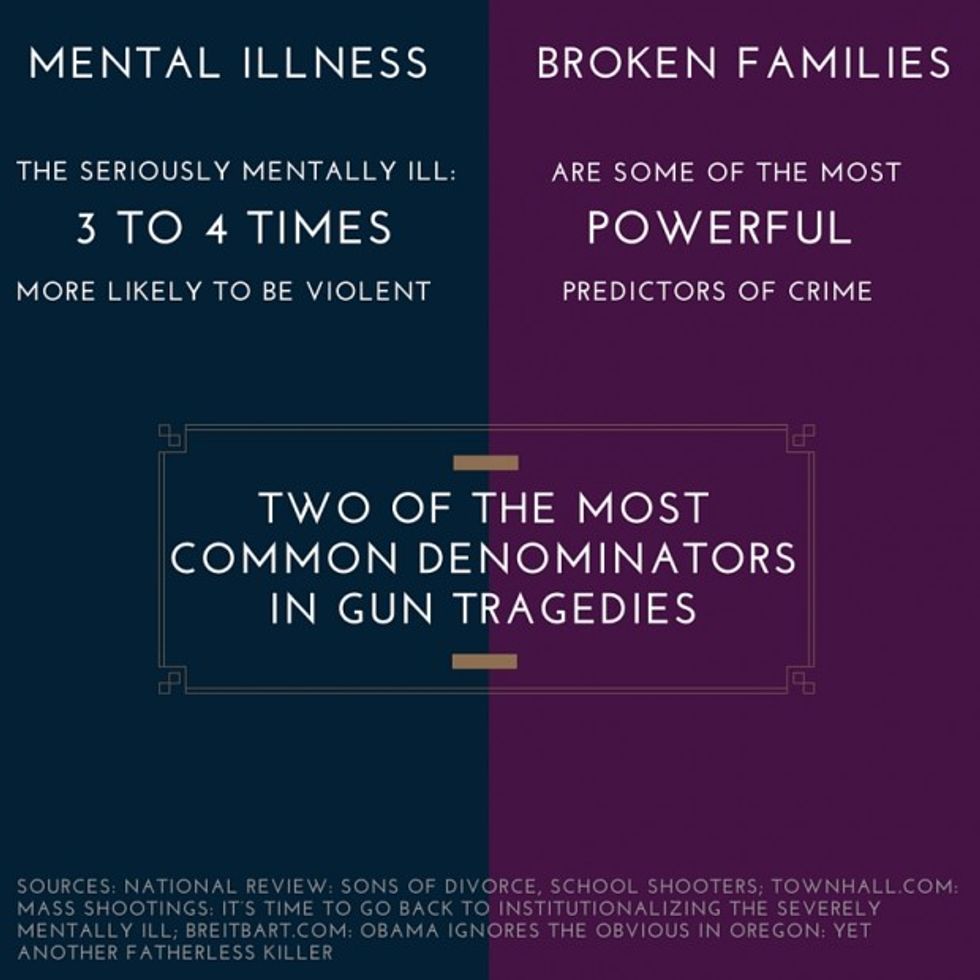
I’m going to let the good folks over at The Federalist explain this one. No matter how much Hillary Clinton says she’s going to close it, “there is no loophole in federal law that specifically exempts gun show transactions from any other laws normally applied to gun sales. Not one.”
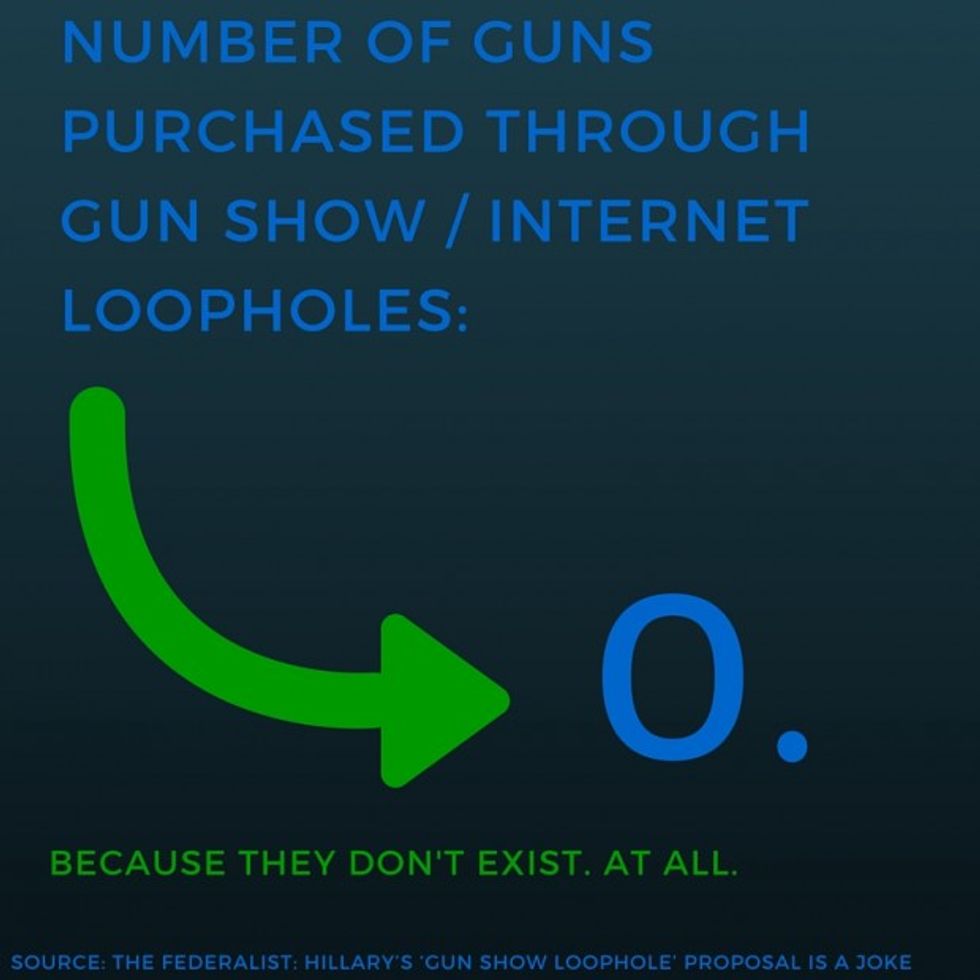
In 2014, the FBI released a study that indicated mass shootings were on a significant (16 percent) uptick over from 2000-2013; a study that the FBI had to backtrack from after it was revealed that it had been based on “ flimsy criteria used in discerning what was or was not a mass shooting.”
The exact opposite was true.
Mass shootings have been flat for 40 years, and violent crime overall dropped massively during that same time studied—as gun sales hit record highs. In fact, despite the way they burn in our memories when they do occur, “mass shootings make up only a small fraction of the country's overall gun crime.”
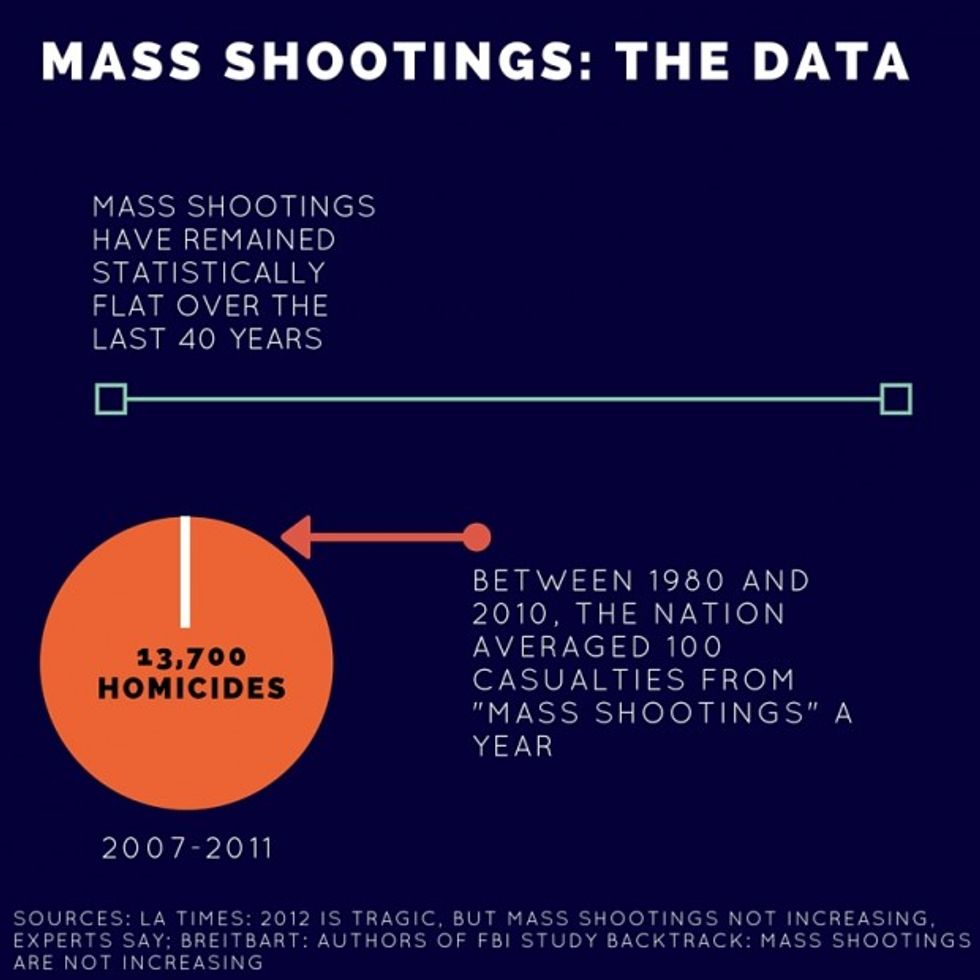
At the end of the day, what’s most important is that this right to bear arms—despite the roar of the debate—has been settled ever since pen was set to paper on the Bill of Rights.
Remember, you’re not fighting to win the right to bear arms; you already have that.
You’re fighting to keep it.
Mary Ramirez is a full-time writer, creator of www.afuturefree.com (a political commentary blog), and contributor to The Chris Salcedo Show (TheBlaze Radio Network, Saturday, from noon to 3 p.m. ET). She can be reached at: afuturefree@aol.com; or on Twitter: @AFutureFree
–
TheBlaze contributor channel supports an open discourse on a range of views. The opinions expressed in this channel are solely those of each individual author.